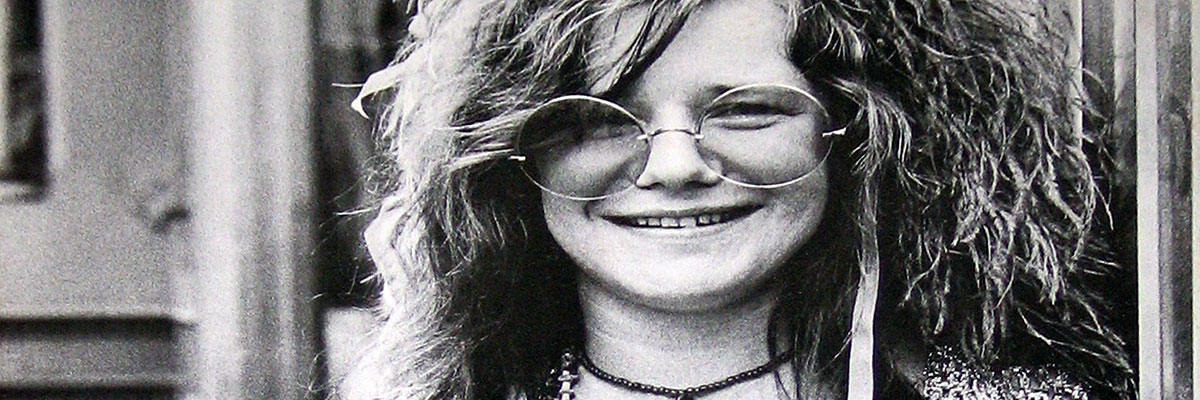
In the annals of rock and roll, few voices burn as fiercely and briefly as that of Janis Lyn Joplin. An American singer and songwriter, Joplin captivated audiences with her powerful mezzo-soprano vocals and an “electric” stage presence that was utterly unique. Her artistry transcended mere performance; it was a visceral outpouring of emotion, a blues-infused wail that spoke to the soul of a generation navigating cultural upheaval and personal liberation. Yet, beneath the dazzling spectacle and the raw, unbridled talent, a tragic narrative unfolded, leading her, like too many legends, to an untimely demise at the age of 27. This placed her in the infamous ’27 Club,’ a grim roster of gifted musicians whose lives were cut short at that haunting age.
To truly understand the depth of Joplin’s journey and the circumstances surrounding her fatal overdose, we must embark on a comprehensive exploration of her life. From the formative years marked by ostracization to her explosive rise to stardom, and through the intense personal battles that often played out in the public eye, every chapter contributed to the complex tapestry of an artist striving for authenticity and connection. Her story is one of immense talent, profound vulnerability, and the relentless pressures that fame can exert on an already fragile spirit.
This in-depth look will meticulously trace the trajectory of Joplin’s extraordinary career and the struggles that shadowed it. We will navigate the highs of her musical triumphs and the lows of her personal battles, uncovering the interwoven threads that ultimately led to that fateful day in October 1970. It is a narrative not just of a rock star’s demise, but of a woman’s unwavering quest for self-expression, set against the vibrant, often chaotic, backdrop of the 1960s counter-culture.
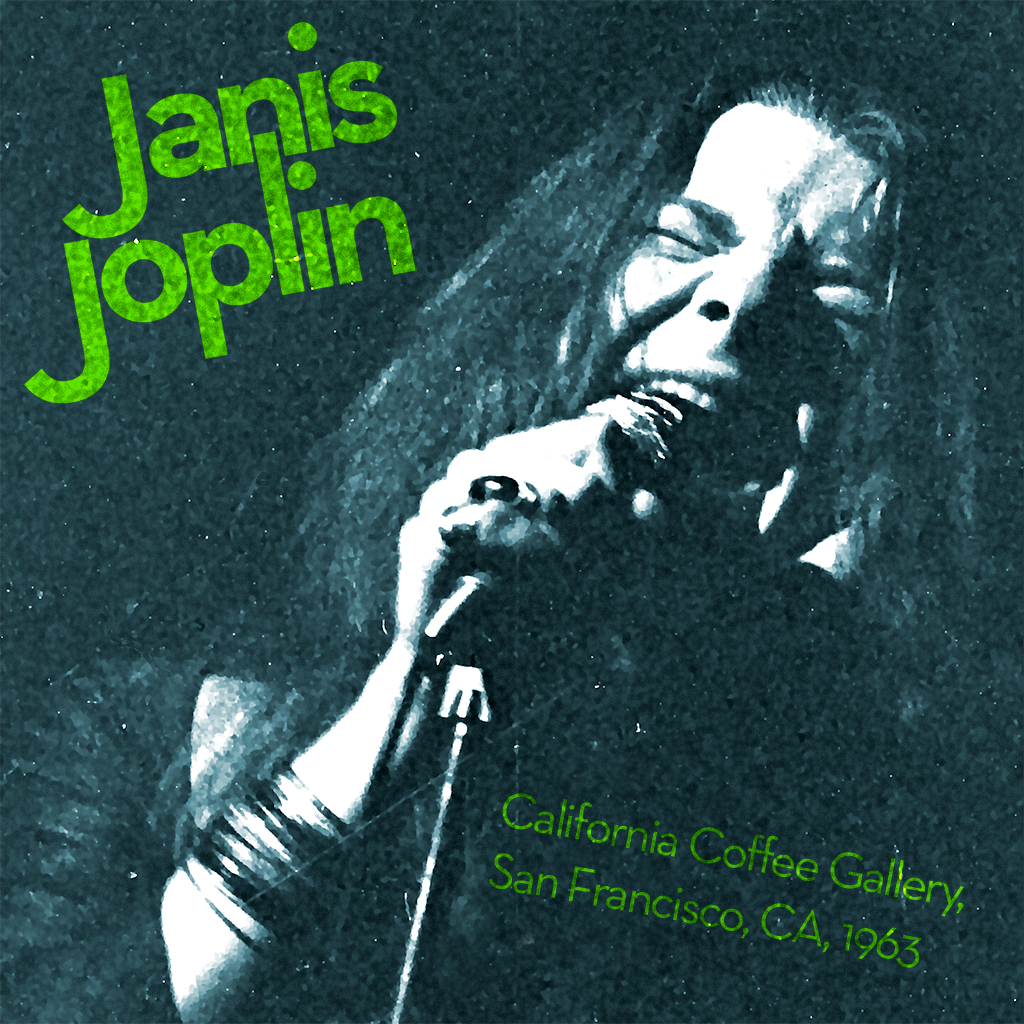
1. **Childhood Ostracization and Blues Awakening**Janis Lyn Joplin’s story began in Port Arthur, Texas, on January 19, 1943. Her parents, Dorothy Bonita East and Seth Ward Joplin, observed early on that Janis seemed to require more attention than her two younger siblings, Laura and Michael. This early family dynamic offers a glimpse into a sensitive child who would later articulate a deep sense of being an outsider, even within the confines of her home and community. Her upbringing in a church-going family provided a conservative backdrop against which her rebellious spirit would eventually ignite.
During her teenage years, Joplin found herself an outcast in the rigid social hierarchy of Thomas Jefferson High School. She experienced relentless bullying, enduring cruel taunts like “pig,” “freak,” “n-word lover,” and “creep.” Adding to her struggles, she became overweight and suffered from severe acne, leaving scars that later necessitated dermabrasion. These deeply painful experiences undoubtedly shaped her worldview, contributing to her self-proclaimed identity as a “misfit” and fueling a desire for genuine expression and belonging. It was during this period that she made a poignant statement, asserting, “I was a misfit. I read, I painted, I thought. I didn’t hate black people.”
However, it was among a group of fellow outcasts that Joplin discovered her true calling. These friends introduced her to the powerful, raw artistry of blues musicians such as Bessie Smith, Ma Rainey, and Lead Belly. These foundational influences would later be credited by Joplin herself as the catalysts for her decision to become a singer. She began singing blues and folk music informally with friends, laying the groundwork for the iconic voice that would soon shake the world.
Joplin’s academic journey included stints at Lamar State College of Technology and the University of Texas at Austin, though she never completed her studies. Even then, her nonconformist spirit was evident, captured in a July 1962 profile in The Daily Texan headlined “She Dares to Be Different.” The article painted a vivid picture: “She goes barefooted when she feels like it, wears Levi’s to class because they’re more comfortable, and carries her Autoharp with her everywhere she goes so that in case she gets the urge to break into song, it will be handy. Her name is Janis Joplin.” While at UT, she performed with a folk trio, the Waller Creek Boys, showcasing her already strong mezzo-soprano vocals and hinting at the star she was destined to become.
Read more about: Toni Morrison’s Beloved: A Haunting Legacy of Memory, Motherhood, and Resistance
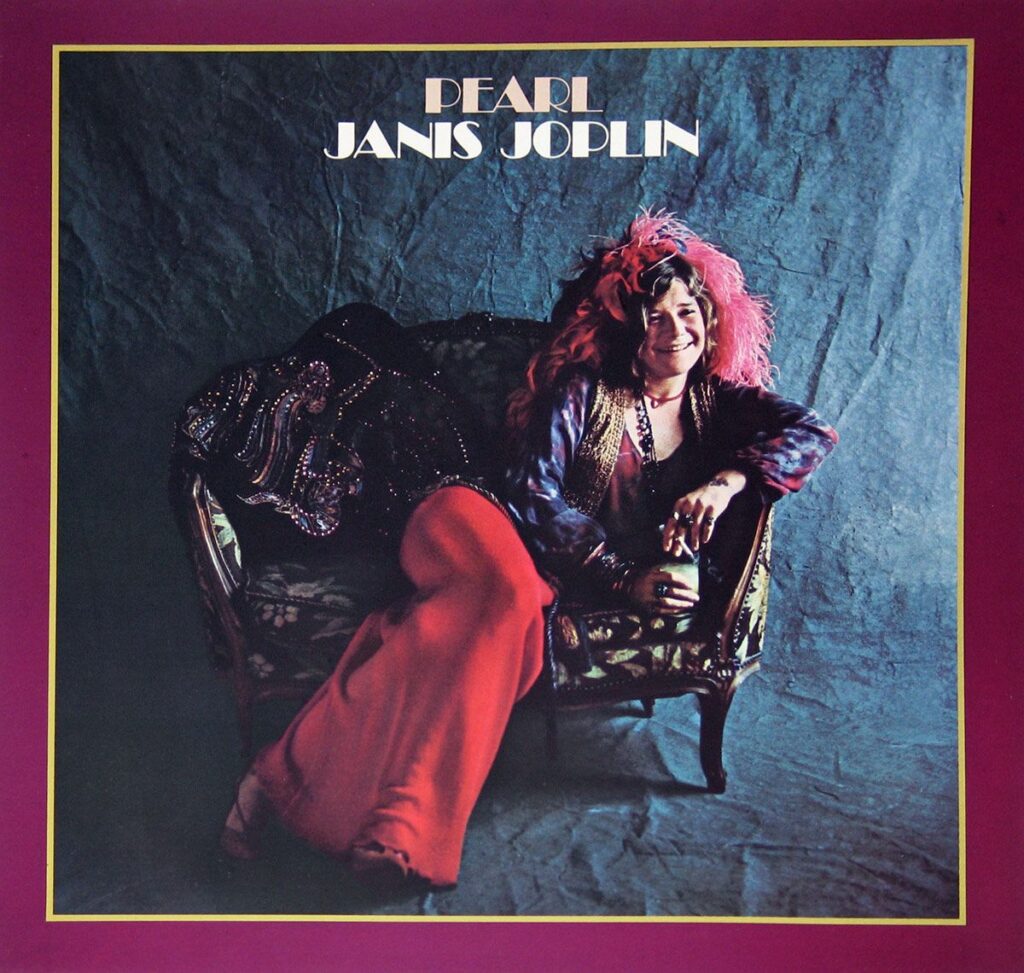
2. **San Francisco’s Siren Call & Early Struggles**Driven by a yearning for liberation and a sense that her “head was in a much different place,” Joplin made the pivotal decision to leave Texas in January 1963. She hitchhiked to North Beach, San Francisco, with her friend Chet Helms, drawn by the burgeoning counter-culture scene. It was here, in the vibrant crucible of the West Coast, that Joplin began to truly cultivate her rebellious persona, consciously styling herself partly after her blues heroines and partly after the Beat poets who had inspired a generation of artistic nonconformity.
Her early forays into recording began to capture the raw essence of her talent. In December 1962, while still in Texas, she recorded her first song, “What Good Can Drinkin’ Do,” on tape at a fellow student’s home. Once in San Francisco in 1964, she collaborated with future Jefferson Airplane guitarist Jorma Kaukonen, recording a number of blues standards. This session, famously known as “The Typewriter Tape” due to Kaukonen’s wife Margareta using a typewriter in the background, included tracks like “Trouble in Mind” and “Nobody Knows You When You’re Down and Out,” offering an early, unvarnished look at her command of the blues idiom.
However, this period in San Francisco also marked the significant escalation of her struggles with substance abuse. In 1963, Joplin was arrested for shoplifting, an early indicator of the chaotic path she was beginning to tread. Over the next two years, her drug use intensified, earning her a reputation as a “speed freak” and an occasional heroin user. She also experimented with other psychoactive drugs and maintained a heavy drinking habit throughout her career, with Southern Comfort becoming her notorious drink of choice. These early years in San Francisco were a crucible of creativity and self-destruction, intertwining her artistic blossoming with a growing dependency.
By May 1965, the detrimental effects of her regular methamphetamine injections were starkly apparent. Friends in San Francisco, observing her “skeletal” and “emaciated” state, intervened, persuading her to return to Port Arthur. They even organized a bus-fare party to facilitate her return to her parents in Texas. Looking back on this initial stint in San Francisco, Joplin confided to Rolling Stone magazine writer David Dalton years later, “I didn’t have many friends and I didn’t like the ones I had,” a poignant reflection of the isolation she often felt despite her burgeoning artistic life.
Back in Port Arthur, Joplin’s parents were shocked by her weight of 88 pounds. In an earnest effort to reclaim her life, she underwent a significant lifestyle change. She avoided drugs and alcohol, adopted a more conventional beehive hairdo, and enrolled as an anthropology major at Lamar University. During this period of sobriety, she commuted to Austin to perform solo, accompanying herself on acoustic guitar, and even became engaged to Peter de Blanc, a relationship that ultimately ended. Her sessions with psychiatric social worker Bernard Giarritano during 1965 and 1966 highlighted her dilemma: how to pursue a singing career without relapsing into drug use. Giarritano reassured her that narcotics were not a prerequisite for success, but Joplin also expressed a fear of a mundane life, stating that if she avoided singing professionally, she would have to become “a keypunch operator… or a secretary, and then a wife and mother,” thus becoming “similar to all the other women in Port Arthur.” This revealed a deep-seated fear of conformity and a powerful drive to live an extraordinary life, even if it meant confronting significant personal demons.
Read more about: Echoes of the Sixties: 14 Music Icons Who Rose to Stardom, Then Vanished Without a Trace – Or So We Thought
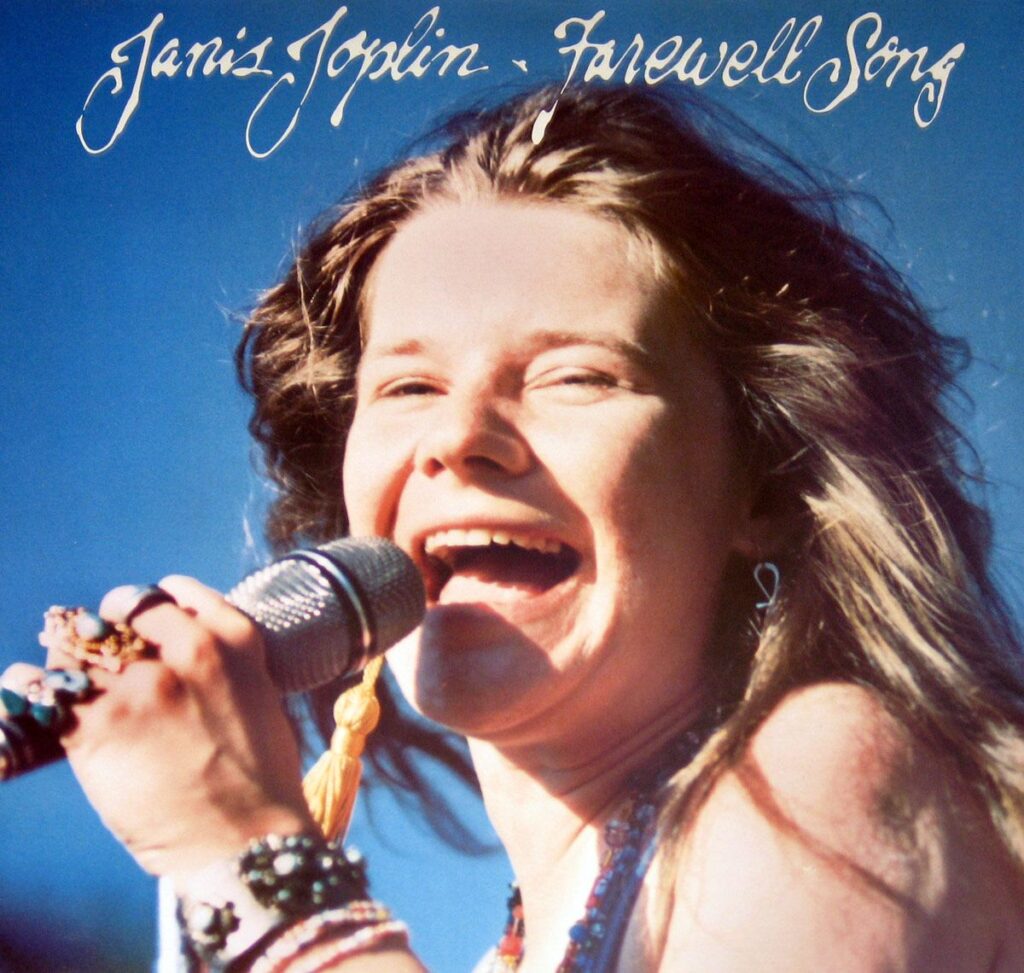
3. **The Turning Point: Big Brother and the Monterey Pop Festival**The allure of San Francisco’s psychedelic rock scene proved irresistible for Joplin, and in 1966, her distinct bluesy vocal style caught the attention of Big Brother and the Holding Company. The band had already garnered a reputation within the nascent hippie community of Haight-Ashbury, and they were looking for a vocalist who could match their raw energy. It was Chet Helms, the same promoter with whom she had hitchhiked from Texas years earlier and who was now managing Big Brother, who recruited her to join the group. He dispatched his friend Travis Rivers to Austin, Texas, where Joplin had been performing with her acoustic guitar, to accompany her back to San Francisco.
Joplin officially joined Big Brother on June 4, 1966, making her public debut with them at the Avalon Ballroom in San Francisco. Her arrival marked a significant transformation for both the band and Joplin herself. However, this period was not without its immediate personal challenges. Upon arriving in San Francisco and sharing an apartment with Travis Rivers, Joplin, still strict about drug use following her earlier struggles, made Rivers promise that no needles would be allowed. A harrowing incident soon followed, vividly recalled by bandmate Dave Getz 25 years later. Getz recounted walking into their apartment to find guests injecting drugs, to which “Janis went nuts! I had never seen anybody explode like that. She was screaming and crying and Travis walked in. She screamed at him: ‘We had a pact! You promised me! There wouldn’t be any of that in front of me!’… She said, ‘You don’t understand! I can’t see that! I just can’t stand to see that!'” This powerful reaction underscored her deep-seated fear of relapse and the pervasive presence of drugs in the counter-culture environment.
Despite these personal battles, Big Brother and the Holding Company began to make their mark. An early concert from the summer of 1966 was later released as the 1984 album *Cheaper Thrills*. The band faced early financial struggles, including being stranded in Chicago after a promoter ran out of money. These challenges, however, led them to sign with Bob Shad’s Mainstream Records. Though initial recordings in September were deemed unsatisfactory, the band continued to perform live, honing their craft.
The band’s breakthrough arrived in June 1967 with their electrifying performance at the Monterey Pop Festival. It was this appearance that catapulted Joplin into national prominence, her raw, impassioned vocals and commanding stage presence stunning audiences and critics alike. Their debut studio album, *Big Brother & the Holding Company*, was released by Mainstream Records in August 1967, shortly after their Monterey triumph. When Columbia Records later took over their contract, they re-released the album, famously adding “featuring Janis Joplin” to the cover. This album spawned several minor hits sung by Joplin, including “Down on Me,” “Bye Bye Baby,” “Call On Me,” and “Coo Coo,” solidifying her status as a formidable new voice in rock.
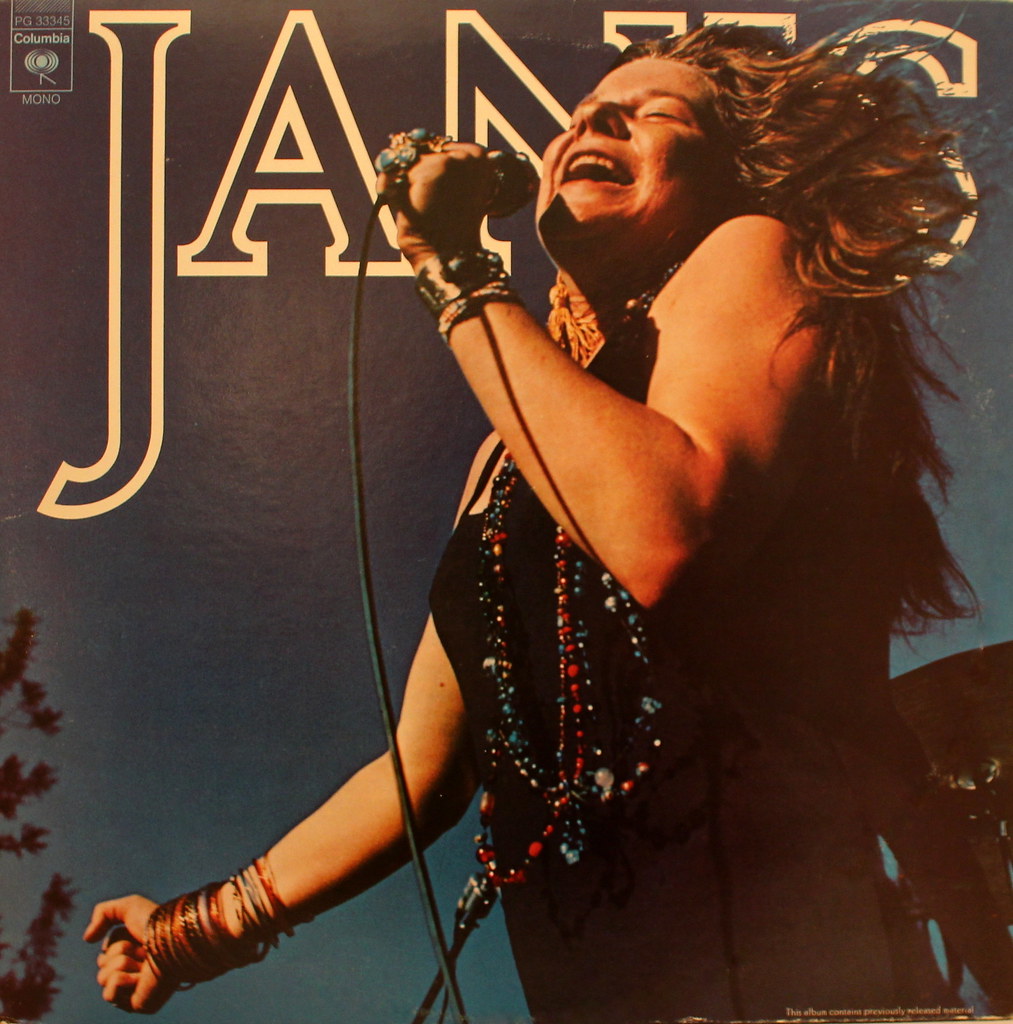
4. **The Raw Power of “Cheap Thrills”**The momentum generated by Monterey Pop and their debut album culminated in the creation of *Cheap Thrills*, released in 1968. This album, a true testament to the band’s raw energy, solidified Janis Joplin’s position as a bona fide rock star. Almost all the tracks were recorded in the studio, with the notable exception of “Ball and Chain,” which was captured in front of a paying audience. The recording process itself embraced an unpolished, authentic aesthetic, even including the sound of a drinking glass breaking and its shards being swept away during the song “Turtle Blues.” This raw quality became a hallmark of their sound, resonating deeply with an audience hungry for genuine expression.
*Cheap Thrills* spawned some of Joplin’s most beloved and enduring hits, most notably her scorching cover of “Piece of My Heart” and the hauntingly beautiful “Summertime.” These tracks, propelled by Joplin’s powerful and emotionally charged vocals, became anthems of the era, showcasing her incredible ability to infuse traditional blues and rock with an undeniable, visceral energy. Her interpretations were not merely covers; they were transformative acts of vocal alchemy, making each song undeniably her own.
The album’s release coincided serendipitously with the premiere of the documentary film *Monterey Pop* at New York’s Lincoln Center for the Performing Arts in December 1968. This dual exposure launched Joplin into superstardom, cementing her image as the untamed, soulful queen of psychedelic rock. The film captured her legendary Monterey performance, allowing a wider audience to witness the raw power and vulnerability that defined her stage presence. The combination of a chart-topping album and a critically acclaimed documentary created an unstoppable force that propelled her to the forefront of the music world.
Within just eight weeks of its release, *Cheap Thrills* soared to number one on the Billboard 200 album chart, holding that coveted position for eight nonconsecutive weeks. This commercial success was a clear indication of her widespread appeal and the public’s thirst for her distinctive sound. The album’s impact was monumental, not only for Joplin and Big Brother and the Holding Company but for the broader landscape of rock music. It showcased a female vocalist who was unapologetically powerful, defiantly emotional, and utterly electrifying, forever changing perceptions of what a woman could achieve in the male-dominated world of rock and roll.
Read more about: 16 Heart-Stopping Horror Moments Where the Cast’s Pure Terror Was Unfiltered – Get Ready to Jump!
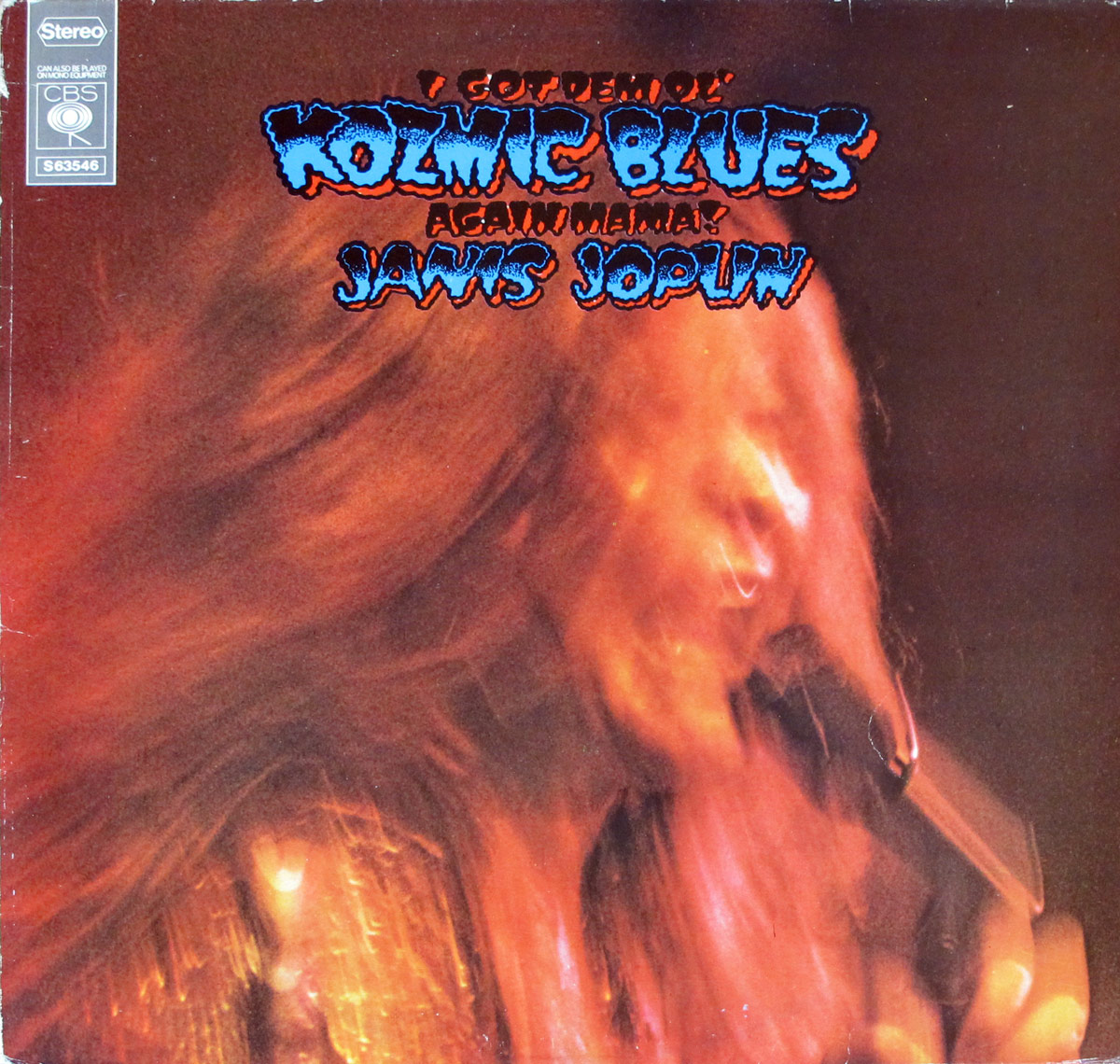
5. **Kozmic Blues and the Search for a New Sound**Following the monumental success of *Cheap Thrills*, Janis Joplin felt a compelling need to evolve artistically, leading to her departure from Big Brother and the Holding Company in late 1968. Her ambition drove her to form a new backup group, the Kozmic Blues Band, which marked a significant shift in her musical direction. Comprised of session musicians like keyboardist Stephen Ryder and saxophonist Cornelius “Snooky” Flowers, alongside former Big Brother guitarist Sam Andrew and future Full Tilt Boogie Band bassist Brad Campbell, this new ensemble was deeply influenced by the Stax-Volt rhythm and blues (R&B) and soul bands of the 1960s, drawing inspiration from legends like Otis Redding. This move reflected Joplin’s desire to explore a richer, more horn-driven sound, distinct from the raw, psychedelic rock of Big Brother.
However, this period of artistic experimentation was deeply intertwined with her escalating personal battles. By early 1969, disturbing reports suggested Joplin was allegedly shooting at least $200 worth of heroin per day, a staggering sum equivalent to approximately $1,715 in 2024. Despite these severe struggles, concerted efforts were made to keep her clean during the recording of her first solo album, *I Got Dem Ol’ Kozmic Blues Again Mama!* Gabriel Mekler, the album’s producer, reportedly went to great lengths to shield her from drugs and her drug-using friends during the production process. This dichotomy—the pursuit of artistic excellence amidst profound addiction—would define much of her later career.
Joplin’s international profile continued to rise, with her appearances with the Kozmic Blues Band in Europe being captured and released in multiple documentaries, including *Janis*, which premiered in 1975. The film offered intimate glimpses into her life on the road, including interviews in Stockholm and footage from her London gig at the Royal Albert Hall. John Byrne Cooke, her road manager for both the Kozmic Blues Band and later groups, would later write a book detailing her ongoing use of narcotics, particularly when she was outside the United States, providing a frank account of her struggles that often went unnoticed by the broader public. Her public appearances, such as the episode of *The Dick Cavett Show* telecast on July 18, 1969, where she performed “Try (Just a Little Bit Harder)” and “To Love Somebody,” showcased her undeniable talent, but the underlying struggles were always present.
Released in September 1969, *I Got Dem Ol’ Kozmic Blues Again Mama!* was certified gold later that year, yet it didn’t quite achieve the same monumental success as *Cheap Thrills*. Reviews of the new group were notably mixed. Music critics like Ralph J. Gleason of the *San Francisco Chronicle* were less enthusiastic, openly criticizing the new band as a “drag” and advising Joplin to “scrap” them and “go right back to being a member of Big Brother… (if they’ll have her).” Conversely, reporter Carl Bernstein of *The Washington Post* celebrated her, writing that Joplin “has finally assembled a group of first-rate musicians with whom she is totally at ease and whose abilities complement the incredible range of her voice.” Columbia Records released “Kozmic Blues” as a single, which peaked at number 41 on the Billboard Hot 100, and the album itself reached number five on the Billboard 200, demonstrating that despite the mixed critical reception, Joplin’s fan base remained loyal and significant.
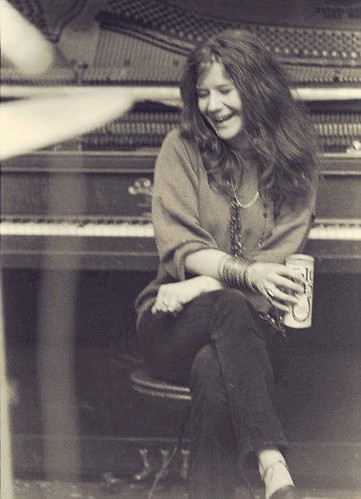
6. **Woodstock’s Chaos and Personal Descent**Janis Joplin’s performance at the iconic Woodstock Festival, commencing around 2:00 a.m. on Sunday, August 17, 1969, remains one of the most legendary, yet personally challenging, moments of her career. Despite informing her band that they should approach it “as if it were just another gig,” Joplin’s demeanor quickly shifted upon realizing the sheer scale of the event. Flown in by helicopter with a pregnant Joan Baez and Baez’s mother, the sight of the enormous crowd instantly made Joplin “extremely nervous and giddy,” as Baez later recalled. The pressure of such a monumental audience, coupled with significant organizational delays, began to take its toll.
Faced with a grueling ten-hour wait after arriving backstage, Joplin succumbed to her vices. She spent a significant portion of that agonizing delay “shooting heroin and drinking alcohol” with her friend and sometimes lover Peggy Caserta in a tent. This desperate attempt to cope with pre-performance anxiety highlights the pervasive grip of addiction on her life, even amidst a career-defining moment. Despite this intense self-medication, when she finally took the stage, Joplin pulled through, engaging frequently with the massive crowd, asking if they had everything they needed and if they were “staying stoned.” The audience, captivated by her raw energy, cheered for an encore, to which Joplin responded with a powerful rendition of “Ball and Chain.”
Pete Townshend of The Who, who performed later that same morning, witnessed Joplin’s set and offered a poignant observation in his 2012 memoir: “She had been amazing at Monterey, but tonight she wasn’t at her best, due, probably, to the long delay, and probably, too, to the amount of booze and heroin she’d consumed while she waited. But even Janis on an off-night was incredible.” This perspective underscores the extraordinary power of her presence, even when hindered by her personal struggles. Despite her performance, Joplin herself was deeply unhappy with it and, by her own insistence, her singing was not included in the 1970 documentary film or its soundtrack for *Woodstock: Music from the Original Soundtrack and More*, though a later director’s cut would feature her powerful rendition of “Work Me, Lord.”
The latter half of 1969 continued to be marked by public incidents and personal turmoil. On November 16, 1969, Joplin was arrested in Tampa, Florida, for using “vulgar and indecent language” after yelling “Don’t with those people!” toward police officers involved in crowd control. She was found guilty and fined $200 plus court costs, an event that further cemented her reputation as an uninhibited rebel. Her struggles also manifested during Madison Square Garden concerts. Publicist-turned-biographer Myra Friedman recounted witnessing a duet Joplin sang with Tina Turner during an opening act for The Rolling Stones, describing Joplin as “so drunk, so stoned, so out of control, that she could have been an institutionalized psychotic rent by mania.” During another Garden concert where she was the solo headliner, some observers believed Joplin attempted to incite the audience to riot. Joplin herself confessed to rock journalist David Dalton that Garden audiences watched her every note with an agonizing question in their eyes: “‘Is she gonna make it?'” These events painted a clear picture of an artist teetering on the brink, battling her demons while simultaneously striving to deliver performances that defied all expectations.
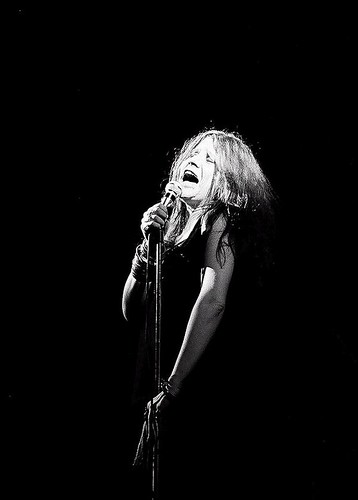
7. **A Brief Respite: Brazil and a Glimmer of Sobriety**As 1970 dawned, Janis Joplin, still reeling from the tumultuous year prior, embarked on a journey that promised a temporary reprieve from her escalating demons. In February, she traveled to Brazil, a venture that marked a significant, albeit fleeting, period of abstinence. Accompanied by her friend Linda Gravenites, who had designed Joplin’s iconic stage costumes, she consciously ceased her drug and alcohol use, seeking a genuine break from the relentless cycle of addiction that had begun to define her public and private existence.
During her stay in Brazil, a romantic connection blossomed with David Niehaus, a fellow American tourist who was traversing the globe. Their time together, captured by the press at Rio Carnival and in personal photographs by Gravenites, painted a picture of a carefree, happy, and healthy young couple. Joplin, quoted by *Rolling Stone* magazine during an international phone call, expressed her newfound sense of liberation: “I’m going into the jungle with a big bear of a beatnik named David Niehaus. I finally remembered I don’t have to be on stage twelve months a year. I’ve decided to go and dig some other jungles for a couple of weeks.”
Biographer Ellis Amburn further illuminated this period, noting that “Janis was trying to kick heroin in Brazil, and one of the nicest things about David was that he wasn’t into drugs.” This relationship and geographical distance offered a rare glimpse into a Janis striving for normalcy and health. However, this fragile equilibrium was short-lived. Upon her return to the United States, the familiar patterns of addiction quickly reasserted themselves.
The relationship with Niehaus soon unraveled, largely due to his discovery of her shooting drugs at her new home in Larkspur, California. The complexities of her life, including an ongoing romantic relationship with Peggy Caserta—who was also an intravenous addict—and her reluctance to take time off to travel the world with him, further strained the bond. The brief interlude in Brazil, while a testament to her desire for change, ultimately proved insufficient to break the powerful grip of her habits, setting the stage for the final, tragic chapter of her life.
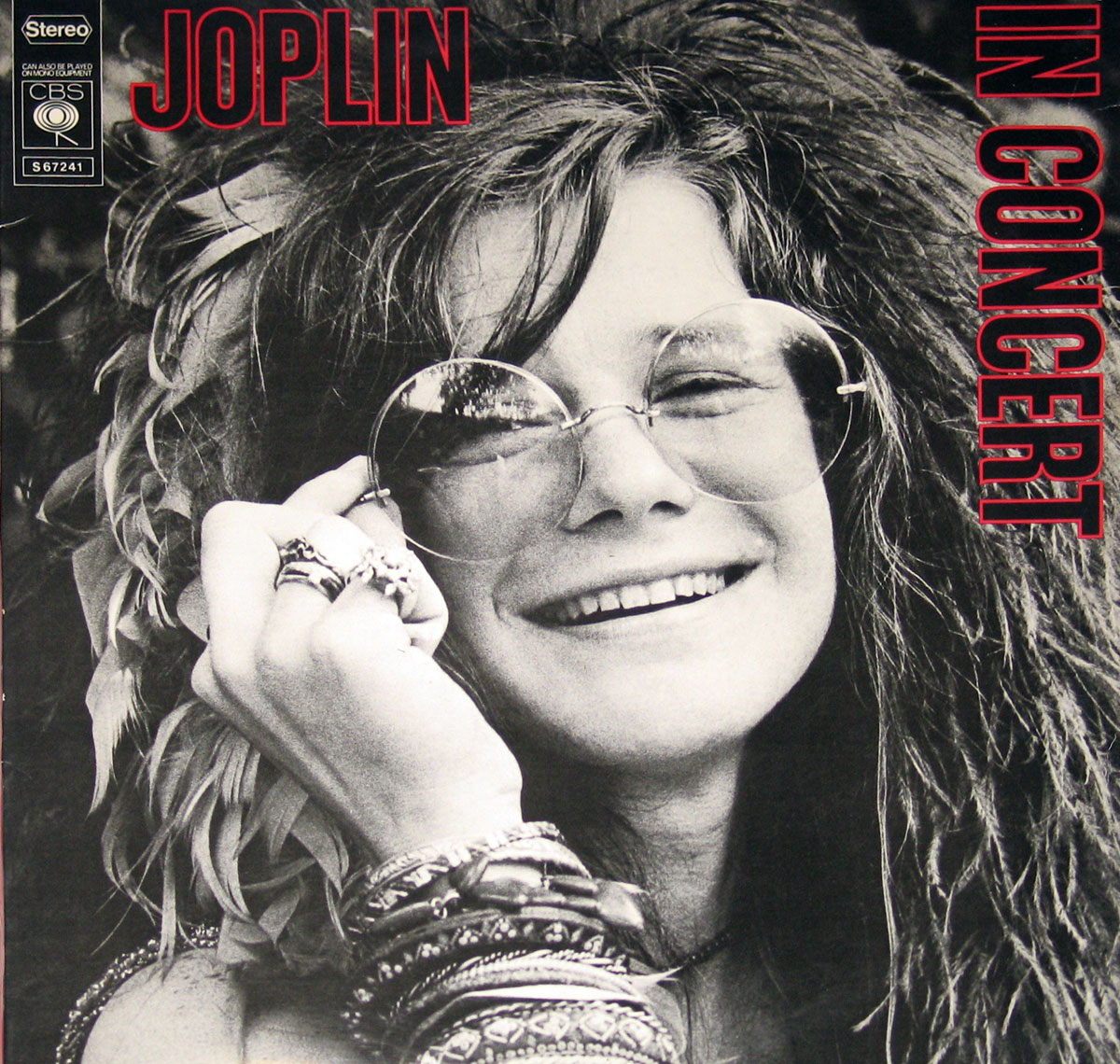
8. **The Full Tilt Boogie Band: “It’s My Band!”**With the Kozmic Blues Band dissolved, Joplin sought a new musical direction and, more importantly, a sense of ownership over her artistic vision. Around this time, she formed a new ensemble, initially dubbed Main Squeeze, before settling on the more evocative Full Tilt Boogie Band. This iteration of her backing group represented a conscious departure from the horn-driven R&B sound of the Kozmic Blues Band, featuring mostly young Canadian musicians and an organ, but notably, no horn section.
Joplin took an unprecedentedly active role in the band’s formation, a stark contrast to her previous groups. Her exhilaration was palpable, as she was famously quoted saying, “It’s my band. Finally it’s my band!” This sentiment reflected a deep yearning for creative control and a cohesive musical unit that truly complemented her raw, uninhibited vocal style. The band’s chemistry quickly became evident, and Joplin found a renewed sense of purpose and joy in their performances.
Before embarking on a nationwide tour, Joplin made final reunion appearances with Big Brother and the Holding Company at venues like the Fillmore West and Winterland in April 1970, with reports indicating she and Big Brother were “in excellent form.” The Full Tilt Boogie Band, billed as Main Squeeze, even performed at a Hells Angels event in San Rafael on May 21, 1970. However, opinions on her performance at this event were divided; while Nick Gravenites described her singing as “stupendous,” former Big Brother guitarist Sam Andrew observed a “visibly deteriorating” and “bloated” Joplin whose singing was “real flabby, no edge at all,” attributing it to excessive drinking.
It was around this time that Joplin began adorning her hair with multi-colored feather boas, a visual flourish that would become synonymous with her later image. Despite telling people she was drug-free as she toured with Full Tilt Boogie, her drinking, as noted by biographer Ellis Amburn, simultaneously escalated. The band’s debut tour quickly garnered positive feedback from both fans and critics, a testament to Joplin’s unwavering talent and her determination to forge a new sound, even as her personal struggles continued beneath the surface.
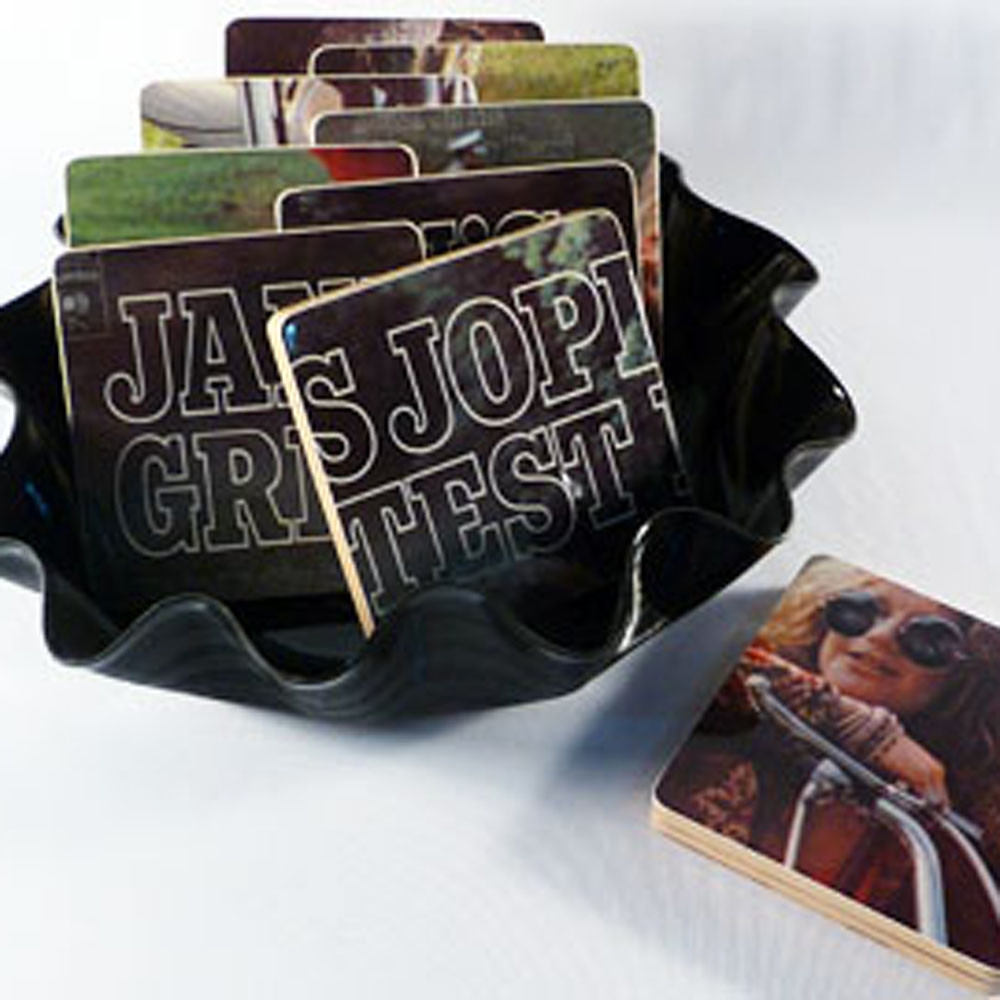
9. **Festival Express and Public Scrutiny**The summer of 1970 saw Janis Joplin and the Full Tilt Boogie Band embark on the legendary Festival Express tour, a cross-Canada journey by train that brought together a stellar lineup of musicians including Buddy Guy, The Band, the Grateful Dead, and Delaney & Bonnie. From June 28 to July 4, they played electrifying concerts in Toronto, Winnipeg, and Calgary, with footage of her performance of “Tell Mama” in Calgary later becoming an iconic MTV video in the early 1980s. These performances showcased a Joplin who, despite her private battles, could still command a stage with unparalleled energy and soul.
Amidst this intense touring schedule, Joplin also made two memorable appearances on *The Dick Cavett Show*, offering glimpses into her personal reflections. In her June 25, 1970, appearance, she famously announced her intention to attend her ten-year high school class reunion. When Cavett inquired about her popularity in school, she candidly confessed that her schoolmates “laughed me out of class, out of town and out of the state,” a raw admission that underscored the lasting pain of her early ostracization.
Another poignant act from this period involved Joplin’s deep respect for her blues forbears. On August 7, 1970, a tombstone was erected at the previously unmarked grave of Bessie Smith, the “Empress of the Blues,” an artist Joplin frequently cited as a profound musical influence. Joplin and Juanita Green, a registered nurse who had done housework for Smith as a child, jointly paid for the memorial, although, according to publicist/biographer Myra Friedman, they never actually met. This gesture highlighted Joplin’s enduring connection to the roots of the music that inspired her.
It was also during this intensely creative and public period that Joplin, alongside fellow musician and friend Bob Neuwirth, composed the iconic song “Mercedes Benz.” The lyrics, partially inspired by a Michael McClure poem, were famously penned on bar napkins at a “gin mill” in Port Chester, New York, between two shows at the Capitol Theatre. She performed it at the second show, and it would become her final recording, a powerful, satirical commentary on consumerism that offered a glimpse into her wry humor and keen social observation. Her last public performance with the Full Tilt Boogie Band took place on August 12, 1970, at Harvard Stadium in Boston, receiving a positive front-page review from *The Harvard Crimson*, despite the band performing with makeshift amplifiers after their regular equipment was stolen. This busy period culminated in her attendance at her high school reunion on August 14, which, predictably, proved to be an unhappy experience as she denigrated Port Arthur and the classmates who had once humiliated her.
Read more about: The Multifaceted Career of Jim Carrey: Exploring His Journey from Comedy Dynamo to Acclaimed Dramatic Actor
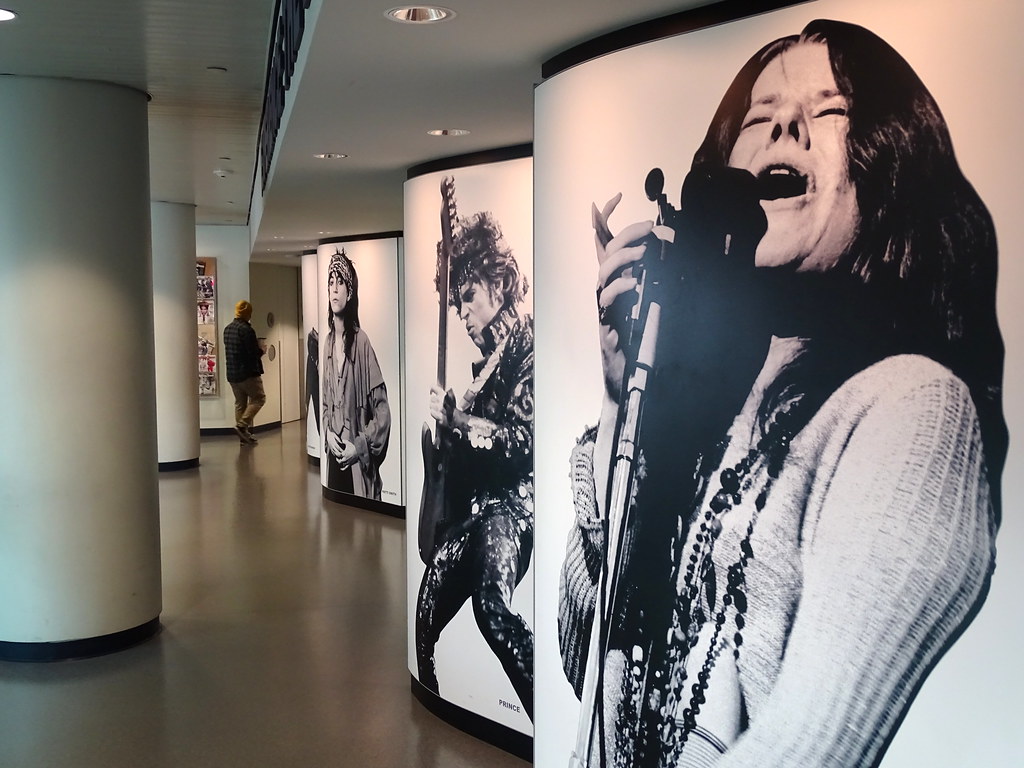
10. **The Pearl Sessions: A Final Creative Burst**On August 24, 1970, Janis Joplin checked into the Landmark Motor Hotel in Hollywood, a locale infamous for attracting drug users, and began the intensive process of rehearsing and recording her next album at Sunset Sound Recorders. This would be her second solo album, posthumously titled *Pearl*, and it was destined to become the biggest-selling album of her career, featuring her iconic number one hit single, a cover of Kris Kristofferson and Fred Foster’s “Me and Bobby McGee.”
The creative atmosphere of the studio was intertwined with Joplin’s tumultuous personal life. During the sessions, she continued a relationship with Seth Morgan, a 21-year-old UC Berkeley student, cocaine dealer, and aspiring novelist. Their connection deepened quickly, leading to an engagement in early September. Despite this whirlwind romance, Morgan’s visits to the recording studio were sporadic, highlighting the disjointed nature of their affair amidst her demanding professional schedule and his lifestyle.
The recording process itself was a testament to Joplin’s raw talent and the dedication of her team. Under the guidance of producer Paul A. Rothchild, renowned for his work with The Doors, Joplin poured her soul into the tracks. Even though she tragically died before all the tracks were fully completed, there was enough usable material to compile a powerful and cohesive LP. The album’s opening track, “Move Over,” written by Joplin herself, offered a personal reflection on how she perceived men treated women in relationships, showcasing her evolving songwriting prowess.
However, the dark undercurrent of addiction persisted, threatening to derail her artistic endeavors. Peggy Caserta, a close friend and former Delta Air Lines flight attendant who owned one of the first clothing boutiques in Haight-Ashbury, claimed in her 1973 book, *Going Down With Janis*, that she and Joplin had mutually decided in April 1970 to stay away from each other to avoid enabling their respective drug use. Yet, by September 1970, Caserta found herself smuggling cannabis across California and, ironically, checked into the same Landmark Motor Hotel due to its reputation as a haven for drug users. It was there that Joplin learned of Caserta’s presence from a heroin dealer. Desperate, Joplin reportedly begged Caserta for heroin, and upon refusal, admonished her with a chilling statement: “Don’t think if you can get it, I can’t get it.” Within days, Joplin became a regular customer of the very same heroin dealer who had been supplying Caserta, signaling a deepening spiral into her addiction even as her final masterpiece was taking shape.
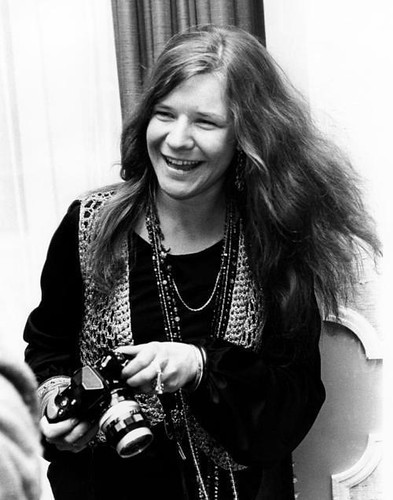
11. **The Shadow Deepens: Final Days and Overdose Triggers**The final weeks of Janis Joplin’s life were a poignant blend of immense creative output and increasing personal chaos. Her manager, Albert Grossman, and his publicist, Myra Friedman, had previously staged an intervention in New York, acutely aware of her struggles. While Friedman knew Caserta had used heroin, she believed Caserta had been out of Joplin’s life for some time, unaware of the renewed proximity at the Landmark. Both Grossman and Friedman, located on the East Coast, were physically distant from Joplin’s situation in California, a separation that, in retrospect, proved tragically isolating.
Away from the studio, Joplin’s behavior grew more reckless. She was known to drive her distinctive Porsche at excessive speeds “on the winding part of Sunset Blvd.,” according to her attorney Robert Gordon. Organist Ken Pearson, the only Full Tilt Boogie member who occasionally rode with her, often hesitated to join, as he was not interested in using hard drugs. Yet, in a fateful detail, he did ride with her on the very night she died, a testament to the complex web of friendships and dependencies that surrounded her.
The studio continued to be a hub of intense activity. On September 26, 1970, Joplin recorded powerful vocals for “Half Moon” and “Cry Baby.” That same session concluded with Joplin, Pearson, and drummer Clark Pierson recording a special one-minute birthday greeting for John Lennon, including a rendition of Dale Evans’s “Happy Trails,” a moment of levity amidst the gravitas of her final work. Her last actual recording, the acapella “Mercedes Benz,” was completed on October 1, 1970, captured in a single, unforgettable take.
Saturday, October 3, was meant to be another productive day. Joplin visited Sunset Sound Recorders to review the instrumental track for Nick Gravenites’s “Buried Alive in the Blues,” and she and producer Paul Rothchild agreed she would lay down the vocal the following day. However, personal turmoil once again intruded. Sometime that Saturday, Joplin learned that her fiancé, Seth Morgan, had met other women at a Marin County restaurant and invited them back to her home. Individuals at Sunset Sound Recorders overheard Joplin expressing both anger over Morgan’s actions and immense joy about the progress of the recording sessions, illustrating the emotional rollercoaster that was her life.
Later that night, Joplin and Ken Pearson left the studio, driving to Barney’s Beanery in West Hollywood where they met Bennett Glotzer, a business partner of Albert Grossman. After midnight, she drove Pearson and a male fan back to the Landmark Motor Hotel. During the ride, the fan persistently questioned her about her singing style, which she “mostly ignored,” as Pearson recounted to Myra Friedman. Upon arriving at the Landmark, where she and Pearson had separate rooms, Joplin paused in the lobby, expressing a fear, perhaps in jest, that he and the other Full Tilt Boogie musicians might decide to stop making music with her. With that haunting sentiment, they separated and went to their respective rooms, marking her last known interaction before the tragedy unfolded.
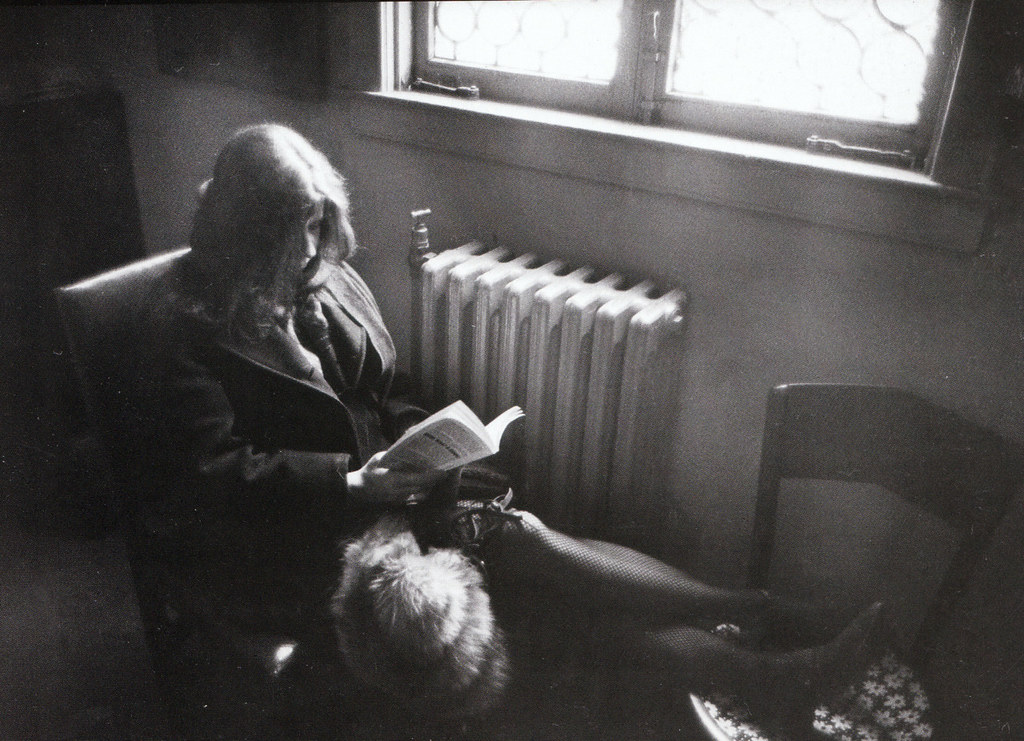
12. **The Tragic End: October 4, 1970**The morning of Sunday, October 4, 1970, dawned with a chilling silence in room #105 of the Landmark Motor Hotel. When Janis Joplin failed to appear for her recording session at Sunset Sound Recorders, her road manager and close friend, John Byrne Cooke, grew concerned. He drove to the hotel, and there, on the floor of her room, he made the devastating discovery: Janis Joplin was dead. Alcohol was present in the room, and initial newspaper reports indicated no other drugs or paraphernalia were found at the scene, immediately prompting questions.
However, a more complex truth later emerged. According to a 1983 book co-authored by Joseph DiMona and Los Angeles County coroner Thomas Noguchi, evidence of narcotics had initially been removed from the scene by a friend of Joplin’s. This individual, in a misguided attempt to protect Joplin’s reputation, had taken the items, only to return them after realizing an autopsy would inevitably reveal the presence of drugs in her system. Noguchi’s book noted previous instances where friends of overdose victims believed they were doing a favor by removing evidence, only to reconsider and return it.
Dr. Thomas Noguchi performed the autopsy, concluding that Janis Joplin’s cause of death was a heroin overdose, potentially compounded by alcohol. John Byrne Cooke, her road manager, held a strong belief that the heroin Joplin had obtained was significantly more potent than what she and other Los Angeles users had previously encountered. This theory was supported by the fact that several of her dealer’s other customers also suffered overdoses during the same weekend, suggesting a batch of unusually strong narcotics in circulation. Her death was officially ruled accidental.
The chain of events leading to that fateful night was further colored by a profound sense of isolation and disappointment. Both Peggy Caserta, her close friend, and Seth Morgan, her fiancé, had failed to meet Joplin on Friday, October 2, just two days before her death. Joplin had been expecting their company that night and was reportedly deeply saddened by their absence. Caserta, despite her role in the unfolding tragedy, later admitted she did not even call Joplin to explain her failure to show up, leaving Joplin alone and vulnerable in her final 24 hours. This confluence of highly potent drugs, her history of addiction, and a final, heartbreaking sense of abandonment conspired to seal her fate, tragically adding Janis Joplin’s name to the grim roll call of the 27-Club.
Read more about: Remember the ’70s? These Pivotal Moments and Transformations Mastered the Global Scene and Shaped Our World Forever.
Janis Joplin’s story, culminating in her premature death, remains a searing testament to the immense pressures of stardom and the relentless grip of addiction. Her legacy, however, transcends the tragedy of her final moments. She was a voice of a generation, a raw and uninhibited spirit who tore down conventional boundaries, infusing rock and roll with an unparalleled blend of blues, soul, and psychedelic passion. Even decades after her passing, her music continues to resonate, a powerful, defiant wail that speaks to the depths of human emotion, forever etching her as an undeniable force in the pantheon of music legends. The ’27 Club’ may claim her, but her artistry and impact remain immortal, a supernova that burned brightly and left an indelible mark on the cultural landscape.


